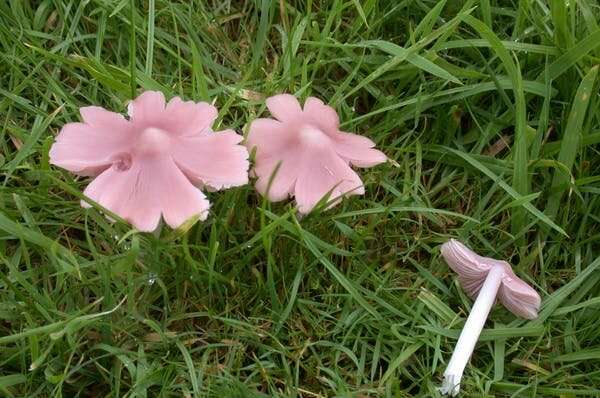How to make your lawn wildlife friendly all year round: Tips from an ecologist

Alongside the worrying current fad , a growing number of people are choosing to let their in order to encourage a more diverse range of plants and insects to live in them.
You may not be convinced of the beauty of a wild and unruly garden, but there is a sweet spot to be found between a rewilded jungle and a sterile green desert which not only looks good but provides a haven for wildlife. This is especially important in the U.K., where 97% of semi-natural grassland has been .
I'm an ecologist specialized in the study of this kind of habitat, and I want to help you get the most out of it. One simple compromise you can make is to put off when you first get the lawn mower out each year. A campaign by conservation charity called asks people with lawns to hold off the first cut until June, which allows grasses and herbs time to flower and set seed.
But if you want to maintain a wildlife-friendly lawn throughout the year, without letting your garden become completely overgrown, here's some advice for what else you can do.
To find a happy medium, some mowing may be necessary. This halts the ecological processes which would otherwise transform a grass lawn into a woodland over time. By varying the height at which you mow different areas of your lawn and how often you do it (simulating the effect of different herbivores grazing in the wild), you can create a mix of conditions which benefit a variety of species.
Areas cut short will favor daisies, which flower in profusion and offer a nectar buffet to bees and butterflies. Unkempt areas left uncut for a year suit a wider variety of flowers, tempting a diverse cast of bugs and other creatures into your garden.

In experiments on his own garden in Kent, Charles Darwin that refraining from mowing turf for too long resulted in fewer species overall, because: "the more vigorous plants gradually kill the less vigorous … thus out of 20 species growing on a little plot of turf (three feet by four) nine species perished from the other species being allowed to grow up freely."
Another key thing to think about is the level of nutrients the lawn receives. Even if you have never succumbed to the lawn feed products heavily promoted in most garden centers, your lawn will get a sufficient dose of fertilizer from carried on the wind.
The purpose of mowing in a natural grassland should be to mimic grazing by animals. And to do that, you have to remove the clippings otherwise the nutrients they carry will soak back into the soil.
Fungi and bacteria decompose dead plant material and return those nutrients to plants in a lawn through networks of mycorrhizal fungi in the soil. Regular mows which dump the cuttings and overload the soil with nutrients drive a stick through the spokes of this cycle by devaluing the currency of the nitrogen and phosphorus fungi deliver. Clumps of cut grass can also .
At unnaturally high soil nutrient levels (common in lawns mown and topped with the clippings regularly), the vegetation is dominated by a small number of fast-growing, weedy species. As Darwin found, this prevents a rich community of wildflowers from taking shape. Soil with low nutrient levels favors not only more species, but also .
At the experiment in Hertfordshire, scientists have studied the effects of annual haycutting since 1860, making it the oldest field experiment in the world. When fertilizer was evenly applied to some plots, it reduced the number of plant species .

Autumn fruiting
You also want to consider the time of year. Mow sparingly and leave grass long in summer to create diverse plant and insect communities in the warmest months. A lawn left uncut until late July, as in a traditional hay meadow, will favor the greatest variety of flowers. But cut it short in autumn to foster conditions for mushrooms fruiting as the year winds down.
Soil organisms and their hidden lives are badly neglected in nature conservation. Among the most overlooked are grassland macrofungi, so named because they are large enough to be visible to the naked eye. My favorites are the brightly colored waxcaps. These are restricted to undisturbed grasslands where .
The British Isles is a global hotspot for these fungi, but they are threatened by habitat loss. 11 species found in the U.K. were assessed by as vulnerable—the same extinction risk faced by the panda and snow leopard.
A showed that waxcaps need the turf to be short (8cm tall at most) in the autumn, but that their most prolific fruiting occurred when the grass was left uncut until mid-July. Waxcaps grow slowly and are long-lived, but with late cuts and the removal of clippings to lower soil nutrient levels, it is likely that will return within a decade.
To sum up, delay mowing until midsummer, keep your lawn free of clippings and leave patches more unkempt for longer to please butterflies and bees. But give it regular trims from August onwards to encourage globally rare mushrooms. You'll then see that grasslands are diverse and dynamic habitats just waiting to be unleashed.
Provided by The Conversation
This article is republished from under a Creative Commons license. Read the .![]()




















